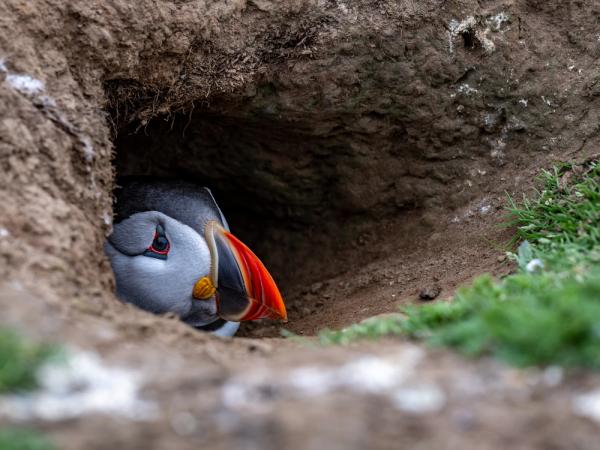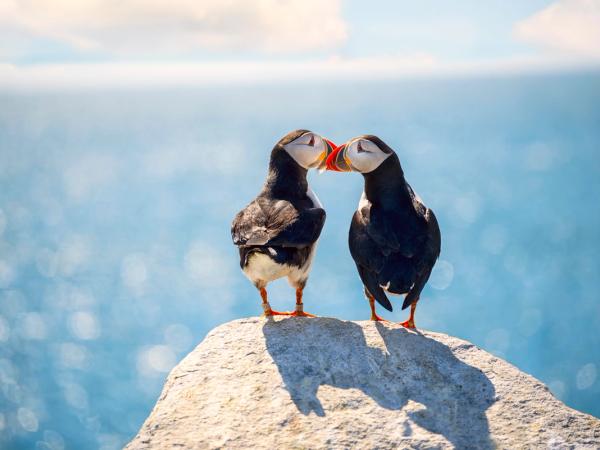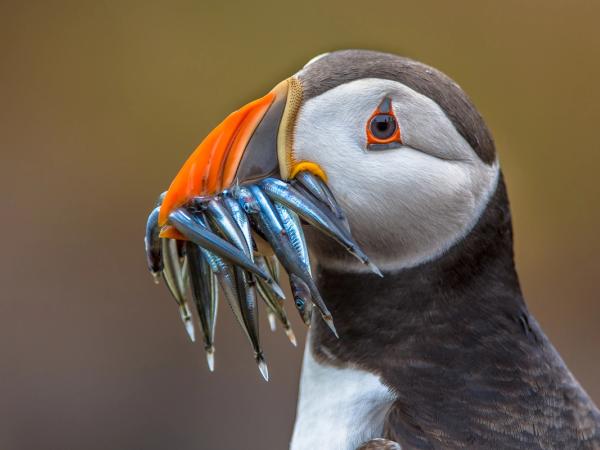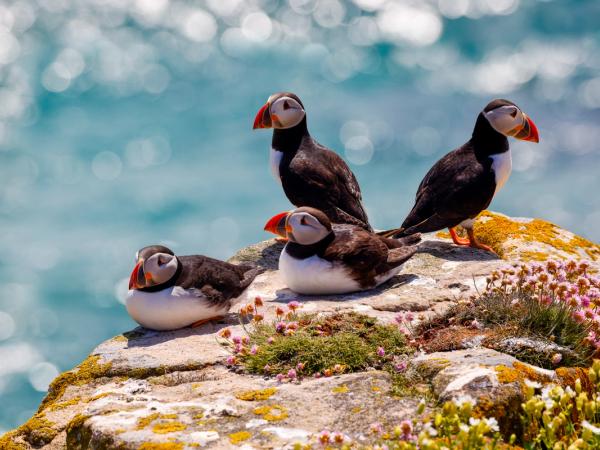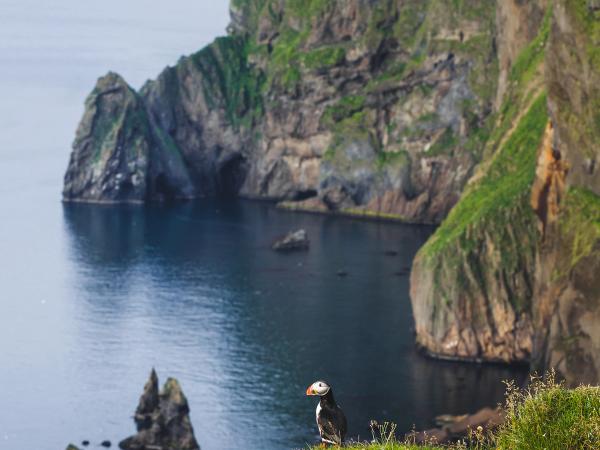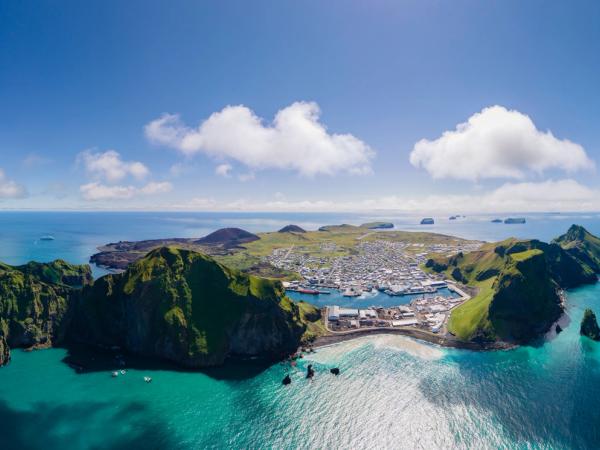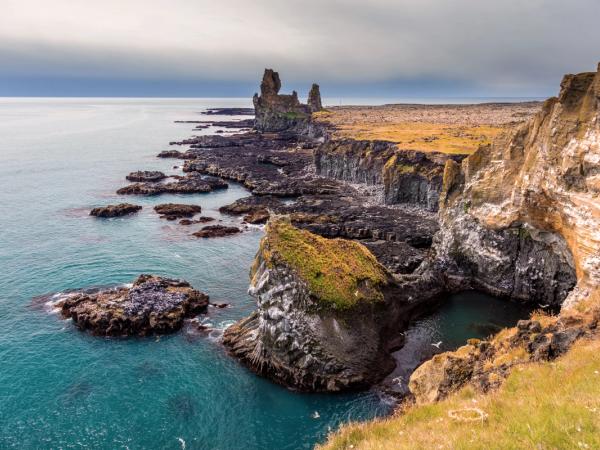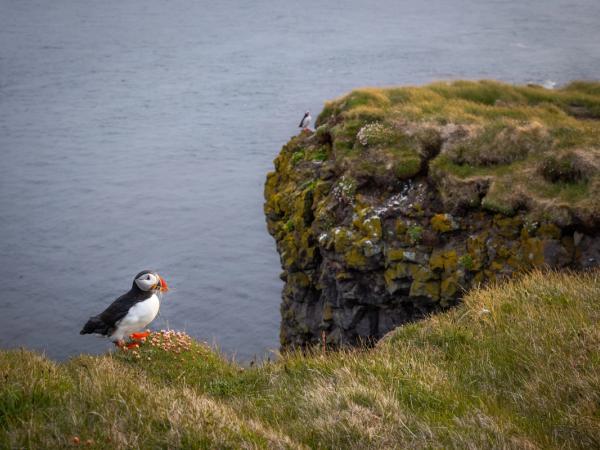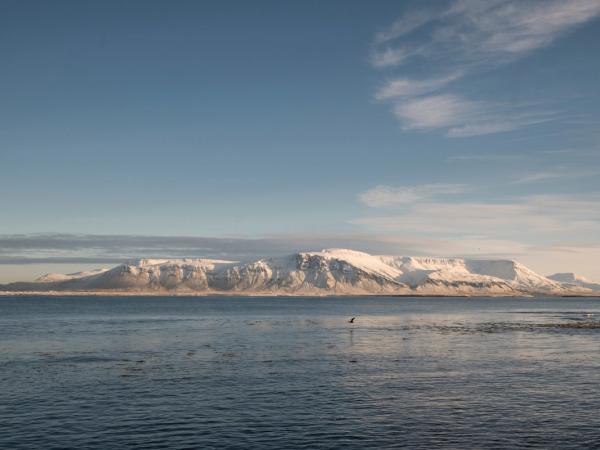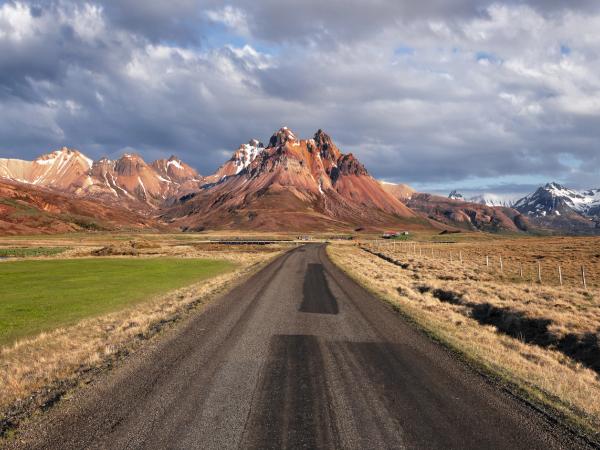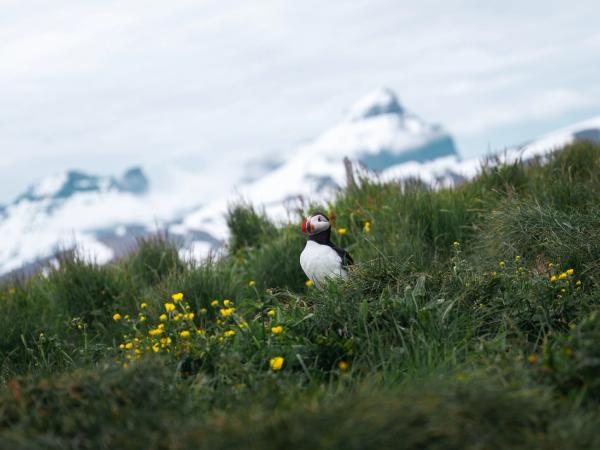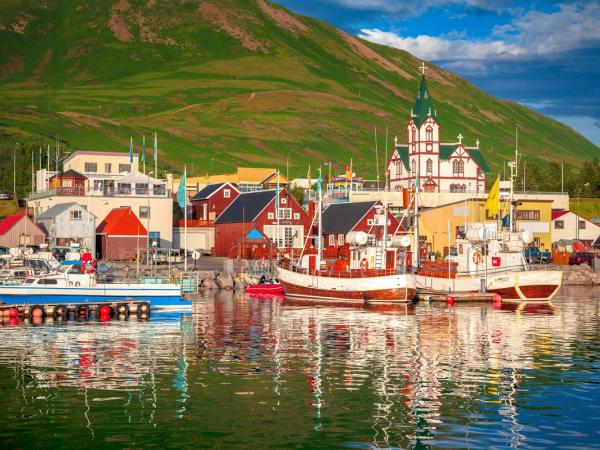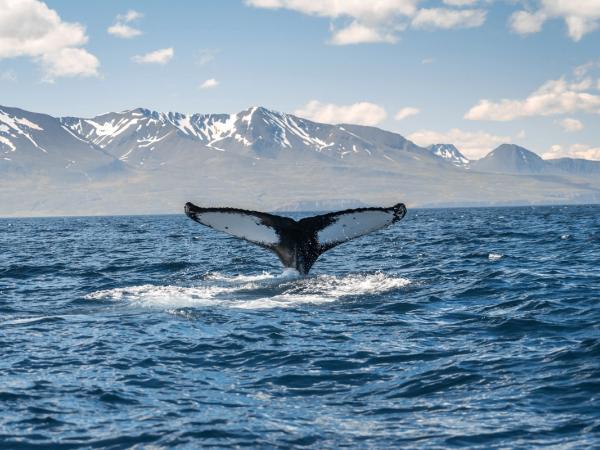
All About Puffins in Iceland: Facts, When & Where to See Them, Tips, etc
Iceland is home to about 60% of the world's Atlantic puffins, making it the best place to see these charming birds. With their colorful beaks and clown-like appearance, puffins often become the highlight of any Iceland trip.
This guide will help you find puffins in Iceland, covering when they arrive, where to spot them, and tips for the best experience.
Key Takeaways
- Iceland hosts 60-80% of the world's Atlantic puffins (8-10 million birds)
- Puffins come to Iceland between April and May, leaving by August or September
- Best viewing time is May through mid-August, especially mornings and evenings
- Top spots include the Westman Islands, Látrabjarg cliffs, and islands near Reykjavík
- Puffins dig burrows on coastal cliffs and lay just one egg each season
- Keep your distance and never disturb their nests
About the Puffin in Iceland
Iceland hosts some of the largest puffin colonies in the world, with around 8–10 million visiting each summer. There are four puffin species (the Tufted Puffin, the Horned Puffin, the Atlantic Puffin, and the Rhinoceros Auklet), but Iceland's puffins are Atlantic puffins, the only type found in the Atlantic Ocean. These small birds are easy to spot with their black-and-white bodies, bright orange feet, and colorful beaks, which have earned them nicknames like "sea parrots" and "clowns of the sea."
Puffins live two different lives – they spend most of the year (about 8 months) out on the open ocean. While they look a bit awkward on land, puffins are strong flyers, reaching speeds up to 55 mph by flapping their wings nearly 400 times per minute.
They're also great divers, using their wings to swim underwater while going as deep as 200 feet to catch small fish like sand eels and herring. A puffin can hold 10-30 fish in its beak at once thanks to special spines inside its mouth.
Here's something many people don't know: the puffin's colorful beak changes with the seasons. The bright colors show up during breeding season to attract mates, but in winter, puffins shed the outer parts of their beaks, leaving a smaller, gray bill.

The puffin in the Icelandic Culture
Puffins have been important in Icelandic culture and history. They were once a key food source, with locals using their meat, eggs, and feathers. Overhunting nearly wiped them out by 1900, mainly in the Westman Islands. Today, they're protected, though some limited hunting still happens in a few areas.
A heart-warming tradition takes place in the Westman Islands, where locals rescue baby puffins (called pufflings) that get confused by town lights when first leaving their nests. Children and families search the streets at night to collect these lost birds and release them safely to sea the next day.

Behaviour Patterns
If you really want to see puffins in Iceland, timing your visit is key, and in order to do that, there are some things you need to take into account.
Nesting and Breeding Season
Puffins return to Iceland in April or May after spending winter at sea. They come back to the same nesting areas and often the same burrows each year, showing they're creatures of habit.
The breeding season runs from May to early September, following these steps:
- Courtship and Nesting (May): Puffins arrive at coastal cliffs and reunite with their mates (they pair for life). They clean out old burrows or dig new ones using their beaks and feet, creating tunnels up to 3 feet long.
- Egg Laying and Incubation (May-June): The female lays one egg, which both parents take turns keeping warm for 36-45 days while the other hunts for food at sea.
- Raising Chicks (July-August): After hatching, the baby puffin stays in the burrow for about 6 weeks. Both parents bring fish back to the burrow several times each day.
- Leaving the Nest (August-early September): The young puffins leave their burrows, heading to sea where they'll stay for 2-3 years before returning to land to breed.
Migration Patterns
Puffins spend most of their lives at sea. After breeding ends in August or September, they leave Iceland's shores and spread across the North Atlantic Ocean.
During winter, these birds change – their bright beaks fade to gray, and their face markings become less visible. They stay at sea until the next spring when the cycle starts again.
For visitors, this means puffin watching in Iceland is limited to a short window, so timing matters when planning your trip.
Best Time to See Puffins in Iceland
This is precisely what you can expect in each season if you want to see puffins in Iceland.
Spring
Spring is when puffins return to Iceland after spending the winter out at sea. They usually arrive in late April and begin settling into their nesting spots along cliffs. You’ll see them preparing their burrows, but their numbers are still growing, so they’re not as active yet. If you’re visiting in spring, you might catch some early arrivals at places like Dyrhólaey or the Westman Islands.
Summer
Summer is prime puffin time in Iceland. From May to mid-August, they’re everywhere! This is when they’re busy nesting, feeding their chicks, and flying back and forth with fish in their colorful beaks. It’s the perfect season to visit spots like Látrabjarg Cliffs, the Westman Islands, or Borgarfjörður Eystri, where you can see them in big colonies. By late August, though, they start heading back to the ocean, so don’t wait too long if puffins are on your list.
Autumn
By autumn, most puffins are gone. A few might stick around in early September, but by mid-month, they’ve pretty much all left for the sea. The cliffs that were full of activity during the summer are now quiet, so autumn isn’t the best time to see puffins.
Winter
In winter, puffins are out in the North Atlantic, far from Iceland. They spend these months on their own, diving for fish and living life at sea. If you’re hoping to see puffins, winter’s not the time—you’ll need to plan a summer trip to catch them in action.
Best Places to See Puffins in Iceland
Iceland offers many great spots for puffin watching. Here are the top places:
Westman Islands
The Westman Islands, especially Heimaey, host Europe's largest puffin colony with about half of Iceland's total puffins. This makes it the #1 place for puffin watching in the country.
The Stórhöfði headland on Heimaey offers great views with thousands of puffins nesting along its cliffs. You can reach the islands by ferry from Landeyjahöfn (a 35-minute ride) or by flight from Reykjavík.
What makes this place special is the puffling rescue tradition in August and early September. If you visit then, you might see locals collecting confused baby puffins that have wandered into town, helping them safely return to sea.
Látrabjarg Cliffs (Westfjords)
Látrabjarg in the remote Westfjords is Europe's largest bird cliff and one of the most dramatic puffin spots in Iceland. The cliffs stretch for 14 kilometers and reach heights up to 440 meters.
What's cool about Látrabjarg is how close you can get to the birds. The puffins here don't fear humans much, sometimes letting you come within a few meters. This makes for great photos, but remember to stay back from cliff edges and don't disturb nesting sites.
While it's remote (about a 5-6 hour drive from Reykjavík), the beautiful landscape and huge number of birds make it worth the trip if you’re a wildlife lover.
Akurey and Lundey Islands (Near Reykjavík)
If you're short on time but still want to see puffins, these small islands near Reykjavík are good options. Lundey Island's name actually means "Puffin Island," and both spots host many colonies.
Several tour companies run boat trips from Reykjavík's Old Harbor, usually lasting 1-2 hours. These tours are handy since you don't need to leave the capital, and they run from May through August.
The boats keep a good distance while still giving you clear views. Bring binoculars or a camera with zoom for the best experience.
Borgarfjörður Eystri (East Iceland)
This spot in East Iceland offers a great puffin-watching experience with around 10,000 breeding pairs. What makes Borgarfjörður Eystri special is the viewing platform at Hafnarhólmi, which lets you observe puffins up close without bothering them.
The area includes stairs, platforms, and information signs, making it great for families. The puffins here seem quite comfortable with people nearby, and continue with their lives completely unbothered.
While it's about an 8-hour drive from Reykjavík, it’s a good detour if you want to pair the puffin watching with exploring East Iceland's scenic fjords and mountains.
Dyrhólaey (South Iceland)
Located near the town of Vík, Dyrhólaey is a 120-meter-high promontory with great views along the south coast. The area hosts a mid-sized puffin colony and is much easier to reach than some other puffin spots.
What's helpful about Dyrhólaey is that it's right on the popular South Coast tourist route, making it easy to include in your sightseeing plans. The massive stone arch and views of black sand beaches are enough to make it a worthwhile spot to visit, so I’d recommend going even if it’s not puffin season.
Note that authorities sometimes close part of Dyrhólaey during early nesting season (usually until June 25th) to protect the birds. Check access before visiting.

Húsavík (Paired With Whale-Watching)
One activity I can’t recommend enough if you come to Iceland is whale watching. I’ve only done it once (I’m planning to do it again soon), but it was such a fantastic experience that I think about it often. But we’re here to talk about puffins.
The sea in Húsavík and the cliffs around it are full of puffins. The cool thing here is that you can see how they behave in the water instead of seeing them on land. You see them flying, hunting, diving…it’s a unique experience. And all of that, while you’re seeing massive mammals coming out of the water. Hard to beat.
Breiðafjörður Bay
Next up is the Breiðafjörður nature reserve and bay between the Snæfellsnes Peninsula and the Westfjords in West Iceland. The location is precisely why the area attracts so many puffins. Luckily, you can explore the bay firsthand with Guide Of Iceland’s boat tour on one of their well-equipped sightseeing boats. These are Icelandic fishing boats, perfect for bird watching since the boats are smaller.
Their Puffin tour starts in Stykkishólmur, where you will sail to the island of Elliðaey, which is the main settlement for puffins on the bay. The island is packed with puffins, and during high puffin season around the middle of July, about 2000 couples are nesting on the island.
Elliðaey is a lovely island that was inhabited until the year 1950. Marvel at the buildings, which include a house, barn, and lighthouse. The trip is perfect for photographers and those who want to snag a picture of the puffins. Luckily, the boat can get extremely close to the island's cliffs without disturbing them. You may even spot dolphins, eagles, and seals on your trip back, too.
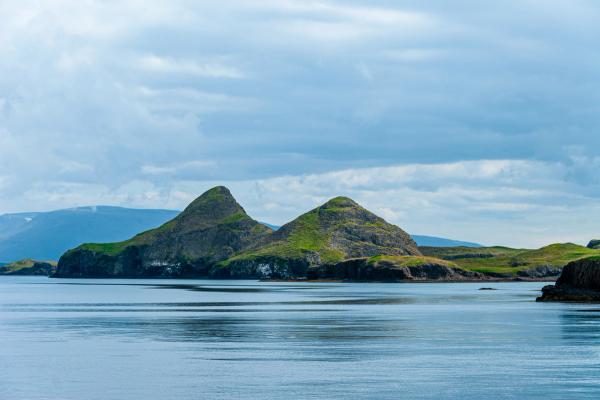
Tjörnes Peninsula
Located on the 196-foot cliffs of the Tjörnes peninsula in Northern Iceland is a big settlement of puffins. You can view them by taking a quick fifteen-minute hike to the outermost tip of Tjörnes called Voladalstorfa. These cliffs are famous in general for their remarkable features. They are multi-colored and layered, and the surrounding area is rich in two-million-year-old fossils.
You can then head over to the east side of the peninsula, where another puffin colony lives. This is near Hringsbjarg, and there is an observation platform where you can hang out and view the puffins. The Tjörnes Peninsula is a 5-hour and 45-minute drive from Reykjavik, but it is truly worth it.
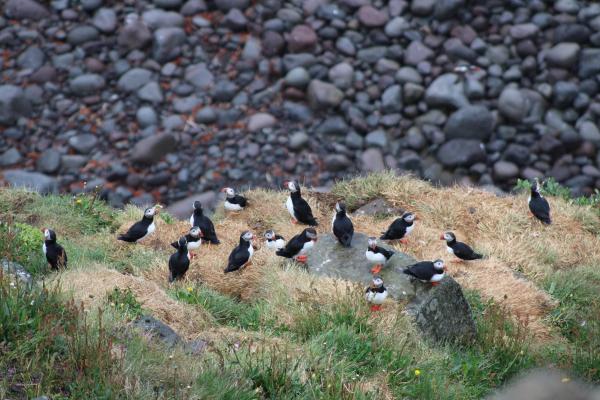
Ingólfshöfði
Explore the isolated area of Cape Ingolfshofdi. It is a headland on the coast of Iceland, about halfway between Skaftafell in Vatnajökull National Park and Jökulsárlón Glacier Lagoon. This area is a nature reserve home to thousands of different birds. This includes the puffin, of course, and great skuas.
To see the puffin firsthand, you can take the Ingólfshöfði Puffin Tour. To get to Ingólfshöfði, the tour will bring you through waters, marshes, and sands in a tractor-drawn hay cart. Your guide will tell stories and explain the birdlife to you while leading you safely through the nesting grounds on the cape. The drive takes about 30 minutes each way. You will then spend around an hour and a half hiking around the cape.
The hike is relatively challenging, taking on a steep sand slope and rocky terrain. But after the first part, it gets easier. The total distance is about 1.8 miles. The hike will allow you to see the puffins along your journey, so we think the extra effort is entirely worth it!
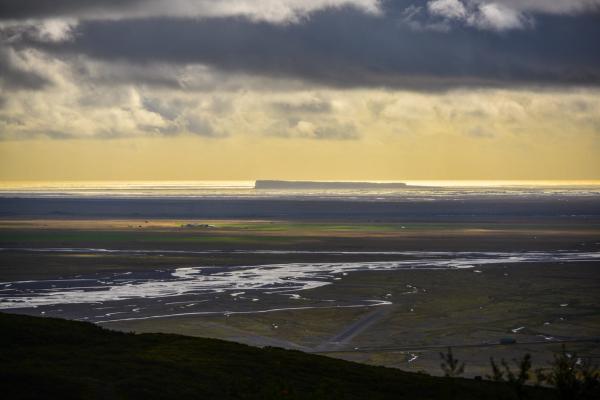
Puffin Spotting Tips
To make the most of your puffin-watching trip, follow these practical tips:
- Timing is key: Visit during mornings or evenings when puffins are most active, returning from fishing trips or preparing to head out to sea.
- Bring the right gear: Binoculars are essential (depending on the location), and a camera with a telephoto lens (200mm or longer) is best for photos. Don't forget rain gear – Iceland's weather can change quickly.
- Keep your distance: Never approach puffin burrows or nesting sites, as this can stress birds or cause burrow collapse. Always stay on marked paths.
- Be patient: Puffins move quickly, and good photos require patience. Plan to spend at least 1-2 hours at viewing spots.
- Try guided tours: Local guides know the best spots and share insights about puffin behavior and conservation. In some places, like the Westman Islands, tours support local conservation efforts.
- Dress for the weather: Many viewing spots are on exposed cliffs where it can be windy and cold even in summer. Wear warm, waterproof layers and sturdy shoes.
- Camera tips: Use a fast shutter speed (at least 1/1000s) to capture puffins in flight. Early morning or evening light works best for photography.
- Skip the flash: Flash photography can startle the birds and disrupt their natural behavior.
Conclusion
Iceland offers the best chances to see Atlantic puffins in their natural habitat. The mix of large colonies, accessible viewing spots, and the birds' limited fear of humans creates an unforgettable wildlife experience.

